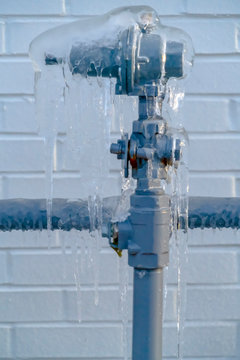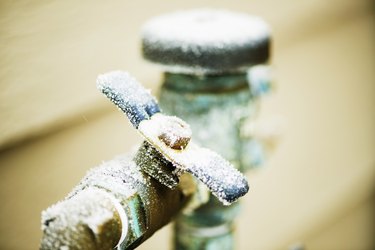Avoid Frozen Plumbing in Cold Weather: Professional Advice
Avoid Frozen Plumbing in Cold Weather: Professional Advice
Blog Article
Each person maintains their personal theory when it comes to Winter Plumbing Precautions: Preventing Frozen Pipes.

Winter can ruin your pipes, especially by freezing pipelines. Right here's exactly how to prevent it from taking place and what to do if it does.
Introduction
As temperatures decline, the risk of frozen pipes rises, potentially resulting in expensive repair work and water damages. Understanding how to avoid frozen pipelines is essential for house owners in cool environments.
Recognizing Icy Pipelines
What causes pipelines to ice up?
Pipes ice up when subjected to temperatures below 32 ° F (0 ° C) for extended durations. As water inside the pipelines freezes, it broadens, putting pressure on the pipe wall surfaces and possibly triggering them to break.
Risks and problems
Icy pipelines can bring about water supply interruptions, residential property damage, and costly repairs. Ruptured pipelines can flood homes and trigger comprehensive structural damages.
Signs of Frozen Piping
Recognizing frozen pipelines early can prevent them from bursting.
How to identify frozen pipelines
Look for reduced water circulation from faucets, unusual odors or sounds from pipes, and noticeable frost on exposed pipes.
Avoidance Tips
Protecting susceptible pipes
Cover pipes in insulation sleeves or make use of warm tape to protect them from freezing temperatures. Focus on pipes in unheated or exterior locations of the home.
Home heating methods
Keep interior spaces adequately heated, specifically locations with pipes. Open up cabinet doors to allow warm air to flow around pipelines under sinks.
Safeguarding Outdoor Plumbing
Garden hoses and outdoor faucets
Disconnect and drain yard pipes before winter months. Set up frost-proof spigots or cover outside faucets with protected caps.
What to Do If Your Pipes Freeze
Immediate activities to take
If you suspect frozen pipelines, keep faucets available to ease pressure as the ice thaws. Utilize a hairdryer or towels taken in warm water to thaw pipes gradually.
Long-Term Solutions
Structural changes
Take into consideration rerouting pipes far from outside walls or unheated areas. Add additional insulation to attic rooms, cellars, and crawl spaces.
Upgrading insulation
Purchase premium insulation for pipelines, attic rooms, and walls. Proper insulation aids maintain consistent temperature levels and lowers the danger of icy pipelines.
Conclusion
Stopping icy pipelines calls for positive actions and fast responses. By recognizing the reasons, indicators, and safety nets, home owners can shield their plumbing throughout winter.
5 Ways to Prevent Frozen Pipes
Drain Outdoor Faucets and Disconnect Hoses
First, close the shut-off valve that controls the flow of water in the pipe to your outdoor faucet. Then, head outside to disconnect and drain your hose and open the outdoor faucet to allow the water to completely drain out of the line. Turn off the faucet when done. Finally, head back to the shut-off valve and drain the remaining water inside the pipe into a bucket or container. Additionally, if you have a home irrigation system, you should consider hiring an expert to clear the system of water each year.
Insulate Pipes
One of the best and most cost-effective methods for preventing frozen water pipes is to wrap your pipes with insulation. This is especially important for areas in your home that aren’t exposed to heat, such as an attic. We suggest using foam sleeves, which can typically be found at your local hardware store.
Keep Heat Running at 65
Your pipes are located inside your walls, and the temperature there is much colder than the rest of the house. To prevent your pipes from freezing, The Insurance Information Institute suggests that you keep your home heated to at least 65 degrees, even when traveling. You may want to invest in smart devices that can keep an eye on the temperature in your home while you’re away.
Leave Water Dripping
Moving water — even a small trickle — can prevent ice from forming inside your pipes. When freezing temps are imminent, start a drip of water from all faucets that serve exposed pipes. Leaving a few faucets running will also help relieve pressure inside the pipes and help prevent a rupture if the water inside freezes.
Open Cupboard Doors
Warm your kitchen and bathroom pipes by opening cupboards and vanities. You should also leave your interior doors ajar to help warm air circulate evenly throughout your home.

I am very fascinated with Prevent Frozen Pipes and I am assuming you enjoyed the entire article. Be sure to set aside a second to promote this blog post if you enjoyed reading it. I praise you for being here. Revisit us soon.
This Page Report this page